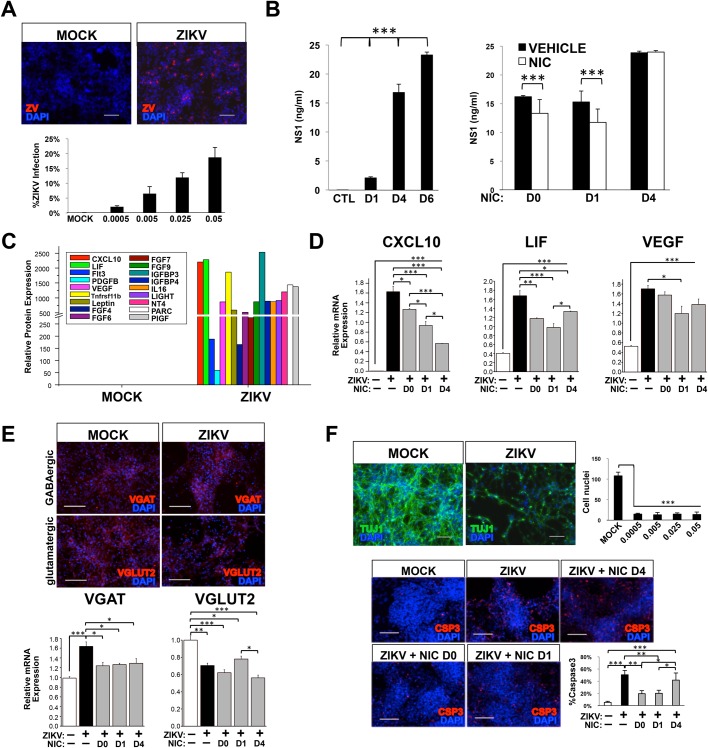Fig. 1.
hiNSCs secrete virus, display an altered secretome and differentiation profile, and undergo apoptosis in response to ZIKV infection, which can be attenuated by Niclosamide treatment in vitro. (A) Infection rate of hiNSCs at different MOIs as determined by immunostaining against flavivirus envelope protein. Scale bar: 100 µM. (B) ELISA assay of secreted ZIKV NS1 protein in cell culture supernatants indicates that hiNSCs secrete increased ZIKV NS1 over time, which can be attenuated by pre- or concurrent NIC treatment. (C) Cytokine array data showing that hiNSCs secrete a variety of cytokines and growth factors. (D) qRT-PCR data indicating that NIC inhibits the expression of CXCL10, LIF and VEGF to varying degrees. (E) ZIKV affects the differentiation profile of hiNSCs. ZIKV infection causes hiNSCs to express higher levels of VGAT and lower levels of VGLUT2, and NIC partially restores the expression of VGAT to control levels. Scale bar: 100 µM. (F) ZIKV induces massive cell death in hiNSCs. By day 10, most hiNSCs are dead regardless of starting MOI. Panel shows immunostaining of mock or ZIKV-infected hiNSCs (MOI 0.0005). Pre- or concurrent NIC treatment can partially restore rate of Caspase3 expression to normal. Scale bar: 100 µM. *P≤0.05, **P≤0.01, ***P≤0.001; as determined by one-way ANOVA with post hoc Tukey test. Error bars show mean±s.d.

